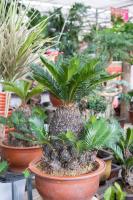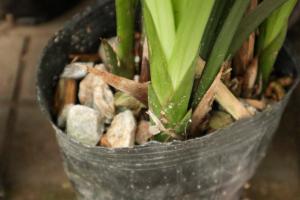Does a Plant Pot Need a Hole?
The Debate about Drainage
The question of whether or not a plant pot needs a hole at the bottom to allow for drainage is a hotly debated topic among gardeners and plant enthusiasts. Some argue that a hole is necessary to prevent water from collecting at the bottom of the pot and causing the roots to rot. Others believe that a hole is not necessary and that proper watering techniques can prevent over-saturation of the soil.
Advantages of a Plant Pot with a Hole
Those who argue in favor of using plant pots with holes cite several advantages. Firstly, a hole allows excess water to drain out of the pot, preventing the soil from becoming waterlogged. This is especially important for plants that are susceptible to root rot, such as succulents and cacti. Secondly, a pot with a hole helps to prevent mineral buildup in the soil, as excess minerals and salts can leach out of the pot along with the excess water. This can reduce the risk of over-fertilization and other problems.
Disadvantages of a Plant Pot with a Hole
Despite the advantages, there are some disadvantages to using a plant pot with a hole. One potential issue is that the soil can dry out too quickly, especially in hot, dry weather or in environments with low humidity. This can lead to wilting and other problems. Additionally, because water can drain out of the pot, it may be necessary to water more frequently than with a pot without a hole. This can be a significant hurdle for those with busy schedules or who tend to forget to water their plants regularly.
Alternatives to a Plant Pot with a Hole
For those who are concerned about the potential drawbacks of using a plant pot with a hole, there are several alternatives available. One option is to use a pot without a hole and to water the plant sparingly, taking care not to over-saturate the soil. This may require some trial and error to determine the appropriate watering schedule for the plant in question. Another option is to use a pot with a hidden drainage system, such as a layer of gravel or stones at the bottom of the pot. This can help to prevent water from collecting at the bottom of the pot while still allowing for sufficient drainage.
The Bottom Line
In the end, whether or not a plant pot needs a hole is largely a matter of personal preference and the needs of the individual plant. In general, plants that prefer well-draining soil and are susceptible to root rot will benefit from a pot with a hole, while those that thrive in moist soil may do fine in a pot without one. The most important thing is to choose a pot that works for you and your plants, and to take care to water and fertilize appropriately for the best results.

 how many times do yo...
how many times do yo... how many planted tre...
how many planted tre... how many pine trees ...
how many pine trees ... how many pecan trees...
how many pecan trees... how many plants comp...
how many plants comp... how many plants can ...
how many plants can ... how many plants and ...
how many plants and ... how many pepper plan...
how many pepper plan...

































